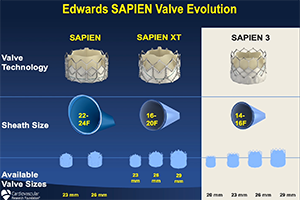Over 15 years: the advancement of transcatheter aortic valve replacement
Abstract
The management of aortic stenosis has been revolutionized by transcatheter aortic valve replacement (TAVR). Initially only undertaken in patients at prohibitive or high surgical risk, as the evidence base and indications have expanded, TAVR is now approved and undertaken in patients at all risk levels. Evolution of valve technology, delivery systems and pathways for patient work-up have been rapid, with associated reductions in the complication profile, particularly vascular complications. Challenges remain as TAVR continues to advance, however, specifically achieving further reduction in paravalvular regurgitation, the requirement for permanent pacemaker implantation, and balancing the risks of thrombosis and bleeding. In this review, we outline the historical advances leading to contemporary TAVR practice, and discuss the future trajectory.
Cover






